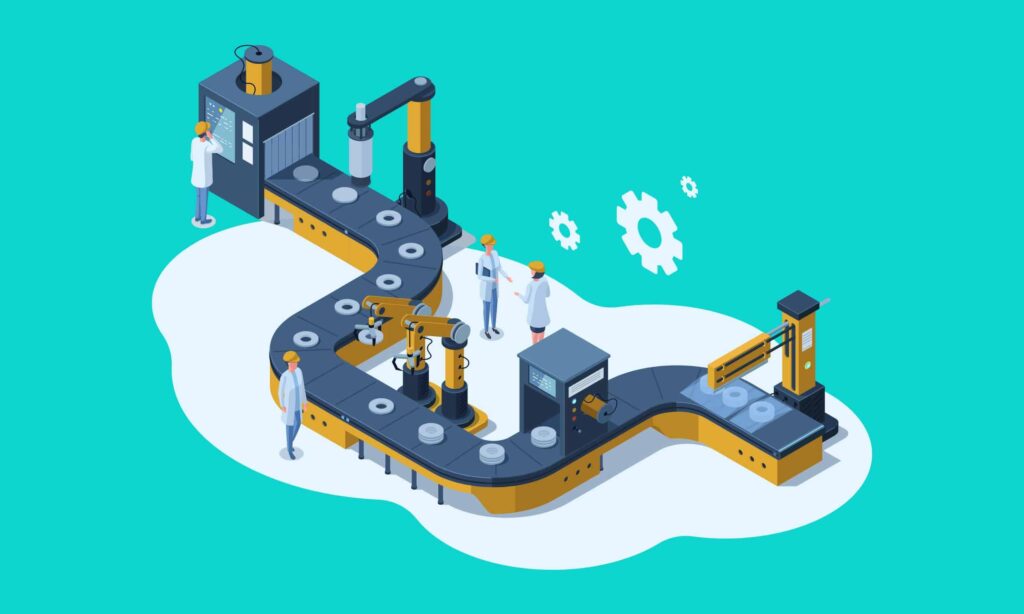What is OPC UA? Why is it important for 3D digital twin?

OPC UA (Open Platform Communications Unified Architecture) is an industrial automation and data transfer standard that enables communication between devices, software, and systems from different manufacturers. This architecture, developed by the OPC Foundation in 2008, is based on the previous OPC standard (OLE for Process Control), but designed to be more flexible, secure and widely applicable.
OPC UA is widely used in various industries such as manufacturing, energy, automotive and process automation due to its interoperability, security and flexibility. OPC UA is one of the key communication standards for Industry 4.0 and the Industrial Internet of Things (IIoT), facilitating seamless communication and integration between different industrial devices and systems.
6 key features of OPC UA
For years, Process Genius has been helping customers transform traditional factories into smart, digitalized environments. Based on our experience, OPC UA has six key features that make it stand out as a plant integration technology:
1. Platform independence
OPC UA is designed to run on a variety of platforms, including Windows, Linux and embedded systems. It uses platform-independent communication protocols such as TCP/IP and web services, enabling interoperability between different operating systems and system architectures.
2. Safety and security
OPC UA includes robust security measures to protect data integrity, confidentiality and authentication. It supports various security features such as encryption, digital signatures and secure authentication mechanisms to ensure secure data transfer and prevent unauthorized access.
3. Scalability
OPC UA is scalable and can be used in small systems as well as in large enterprise applications. It supports point-to-point and multi-node communication models, enabling communication between devices and systems from different vendors on the network.
4. Data modelling
OPC UA provides a flexible and extensible information modelling framework. It allows users to define custom data structures, object types and methods, enabling the efficient representation and exchange of complex data. It also supports hierarchical browsing and browsable access to data and functionality.
5. Alerts and events
OPC UA includes mechanisms for handling alarms, events and history data. It enables real-time reporting and timely notification of critical events such as alarms, faults or abnormal conditions, facilitating proactive maintenance and troubleshooting.
6. Use of historical data
OPC UA supports the use of historical data stored in industrial systems. Where available, OPC UA can retrieve historical data from systems, such as process values, events and alarms, allowing you to analyse and visualise trends based on history.
How does OPC UA work?
OPC UA is relatively easy to implement today, as many hardware manufacturers and software developers support the standard procedure. In addition, the OPC Foundation provides development tools to facilitate the implementation of OPC UA-based solutions. As OPC UA is a continuously evolving and widely adopted technology, its adoption is becoming widespread in industrial automation.
Modern machines are sophisticated robots controlled by industrial computers. Today, industrial automation systems comprise a wide range of interconnected sensors and actuators, including motors and relays. The logic component of the system receives inputs from these sensors and issues commands based on their status.
The logic component acts as the central control system for managing all the functions of the machine. As the complexity of the machine increases, so does the number of sensors and other devices required. Therefore, the logic system incorporates a significant number of variables in its code to efficiently handle a wide range of inputs and functions.
Line switches typically consist of several logic components, with the client logic acting as the controlling unit for the whole system. The server logics are controlled components that follow the instructions given by the client logic. OPC UA can be used to collect comprehensive variable data from line logic. By collecting data from the client control system alone, a much larger number of variables can usually be used than what machine operators see from their HMI panels.

Industrial processes usually follow a standard procedure (Figure 1) to enable real-time data collection and distribution. Once the necessary settings have been configured on the platform, a connection to the OPC UA server can be established. If the connection is successfully established and the security settings are correct, data can be retrieved and updated from the server. Importantly, OPC UA facilitates the retrieval of large amounts of data from machines that can later be processed using artificial intelligence. The industry is undergoing a digital transformation that will allow data from different sources to be combined, enabling AI to analyse data from OPC UA, ERP, SCADA and other systems.
What is the Genius Core™ 3D Digital Twin platform and why is it important?
The Genius Core™ 3D Digital Twin platform creates an identical replica of a physical, real factory. The platform collects and visualizes data from existing equipment and systems. One of the keys to our proven success over the years is our strong partnership with Beckhoff Automation.
With the Beckhoff PLC industrial computer, we are able to open up new possibilities for our customers, such as:
From our customers’ perspective, data collected directly from the field plays a crucial role in modern logic systems. These systems have a wide range of sensors that transmit data directly to the platform, so we don’t need to install additional sensors on the machines themselves. Even current sensors are integrated into the machines for energy consumption calculations. However, we have extensive expertize in working with both wireless and wired sensors, supplied by well-known brands such as Advantech, Haltian and HW Group. The Genius Core™ 3D Digital Twin platform collects data from sensors and presents a comprehensive 3D overview of the plant, including relevant environmental status information.